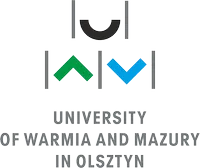Clinical Physiology
Clinical physiology is both an academic discipline within the medical sciences and a clinical medical specialty for physicians in the health care systems of Sweden, Denmark and Finland. Clinical Physiology can also be more broadly defined as the application of the knowledge of human physiology to patients in a health care setting. As a specialty for medical doctors, Clinical Physiology is a diagnostic specialty to which patients are referred to undergo specialized tests of functions of the heart, blood vessels, lungs, kidneys and gastrointestinal tract, and other organs. Testing methods include evaluation of electrical activity (e.g. electrocardiogram of the heart), blood pressure (e.g. ankle brachial pressure index), and air flow (e.g. pulmonary function testing using spirometry). In addition, Clinical Physiologists measure movements, velocities, and metabolic processes through imaging techniques such as ultrasound, echocardiography, magnetic resonance imaging (MRI), x-ray computed tomography (CT), and nuclear medicine scanners (e.g. single photon emission computed tomography (SPECT) and positron emission tomography (PET) with and without CT).
Physiology
Physiology (; from Ancient Greek φύσις (physis), meaning 'nature, origin', and -λογία (-logia), meaning 'study of') is the scientific study of normal mechanisms, and their interactions, which work within a living system. A sub-discipline of biology, its focus is in how organisms, organ systems, organs, cells, and biomolecules carry out the chemical or physical functions that exist in a living system. Given the size of the field, it is divided into, among others, animal physiology (including that of humans), plant physiology, cellular physiology, microbial physiology (microbial metabolism), bacterial physiology, and viral physiology.
Research
Research comprises "creative and systematic work undertaken to increase the stock of knowledge, including knowledge of humans, culture and society, and the use of this stock of knowledge to devise new applications." It is used to establish or confirm facts, reaffirm the results of previous work, solve new or existing problems, support theorems, or develop new theories. A research project may also be an expansion on past work in the field. Research projects can be used to develop further knowledge on a topic, or in the example of a school research project, they can be used to further a student's research prowess to prepare them for future jobs or reports. To test the validity of instruments, procedures, or experiments, research may replicate elements of prior projects or the project as a whole. The primary purposes of basic research (as opposed to applied research) are documentation, discovery, interpretation, or the research and development (R&D) of methods and systems for the advancement of human knowledge. Approaches to research depend on epistemologies, which vary considerably both within and between humanities and sciences. There are several forms of research: scientific, humanities, artistic, economic, social, business, marketing, practitioner research, life, technological, etc.
Research
Nothing has such power to broaden the mind as the ability to investigate systematically and truly all that comes under thy observation in life.
Marcus Aurelius, Meditations (c. 161–180 CE), Chapter II.
Research
The worst thing happens when ideologists are trying to analyse scientific researches.
Jerzy Vetulani, Neurobiologia inteligencji, „Wiedza i Życie” 2/2008, pages 14–19.
Research
During all those years of experimentation and research, I never once made a discovery. All my work was deductive, and the results I achieved were those of invention, pure and simple. I would construct a theory and work on its lines until I found it was untenable. Then it would be discarded at once and another theory evolved. This was the only possible way for me to work out the problem. … I speak without exaggeration when I say that I have constructed 3,000 different theories in connection with the electric light, each one of them reasonable and apparently likely to be true. Yet only in two cases did my experiments prove the truth of my theory. My chief difficulty was in constructing the carbon filament. . . . Every quarter of the globe was ransacked by my agents, and all sorts of the queerest materials used, until finally the shred of bamboo, now utilized by us, was settled upon.
Thomas Edison on his years of research in developing the electric light bulb, as quoted in "Talks with Edison" by George Parsons Arthropod in Harper magazine, Vol. 80 (February 1890), p. 425.
